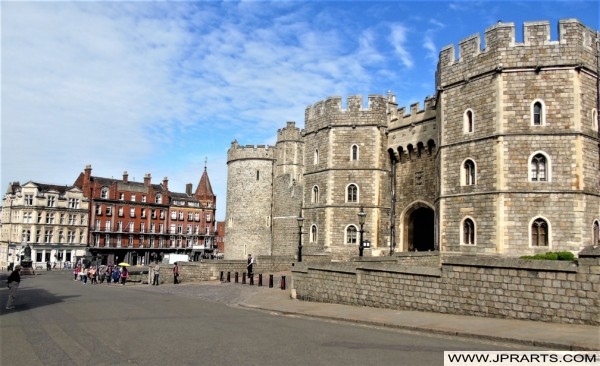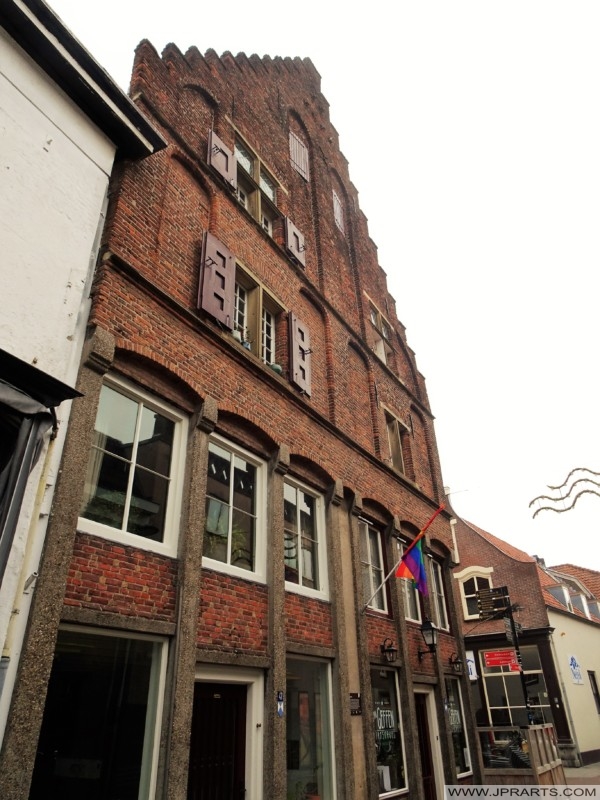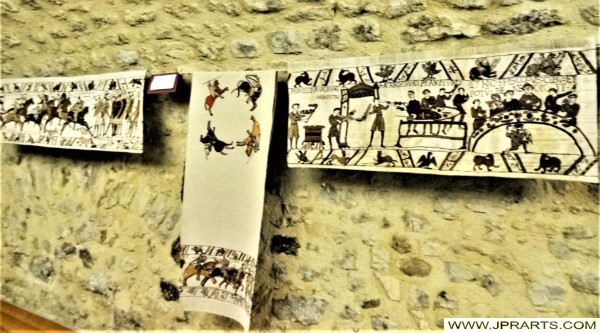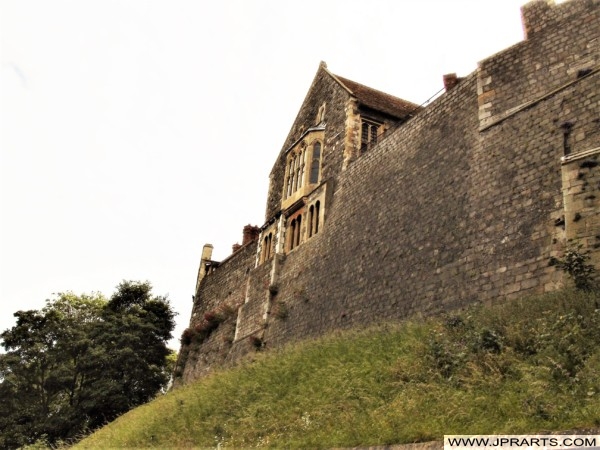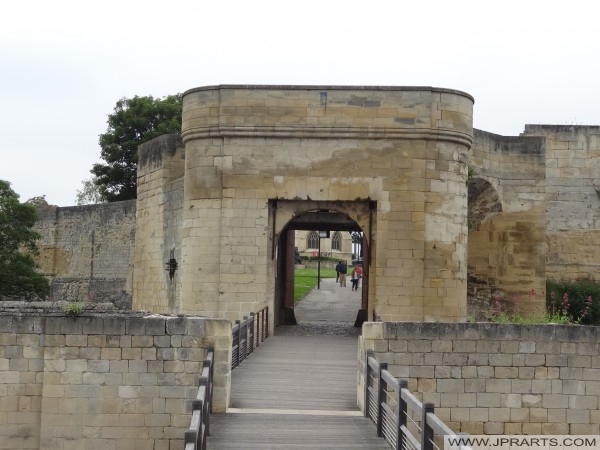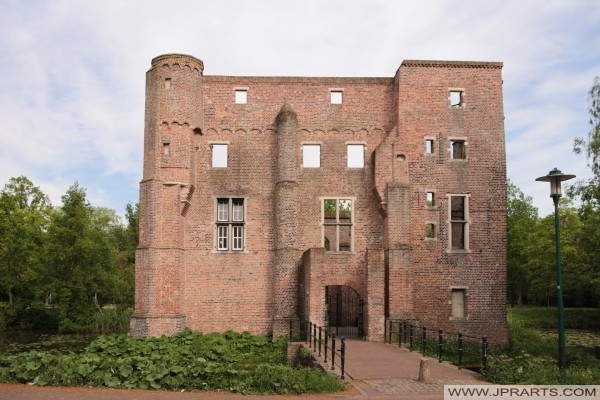A castle is a type of fortified structure built during the Middle Ages predominantly by the nobility or royalty and by military orders. Scholars usually consider a castle to be the private fortified residence of a lord or noble. This is distinct from a mansion, palace and villa, whose main purpose was exclusively for pleasance and are not primarily fortresses but may be fortified. Use of the term has varied over time and, sometimes, has also been applied to structures such as hill forts and 19th- and 20th-century homes built to resemble castles. Over the Middle Ages, when genuine castles were built, they took on a great many forms with many different features, although some, such as curtain walls, arrowslits, and portcullises, were commonplace.
Castles
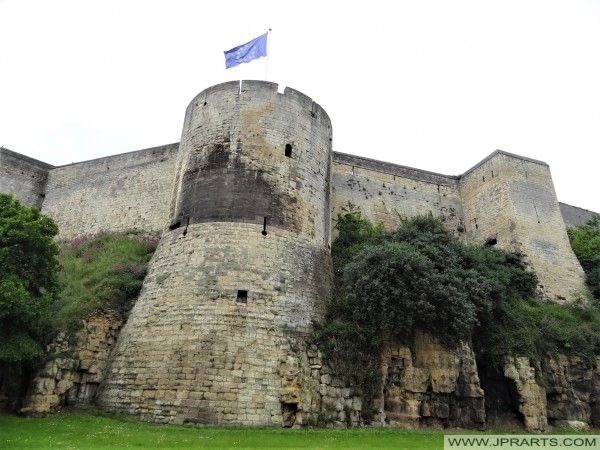
Castillos
Schlösser
European-style castles originated in the 9th and 10th centuries, after the fall of the Carolingian Empire resulted in its territory being divided among individual lords and princes. These nobles built castles to control the area immediately surrounding them and the castles were both offensive and defensive structures; they provided a base from which raids could be launched as well as offered protection from enemies. Although their military origins are often emphasised in castle studies, the structures also served as centres of administration and symbols of power. Urban castles were used to control the local populace and important travel routes, and rural castles were often situated near features that were integral to life in the community, such as mills, fertile land, or a water source.
城堡
Замки
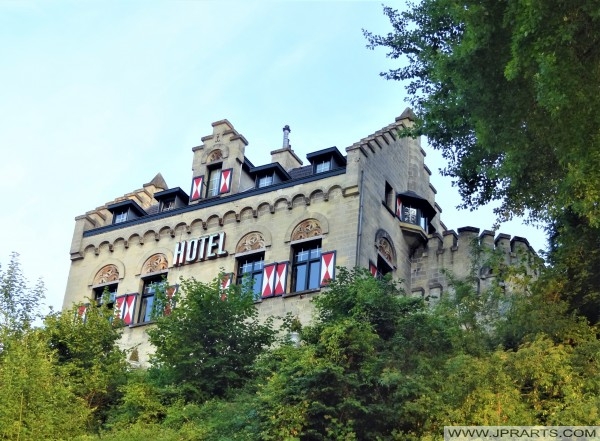
Châteaux
Historian Charles Coulson states that the accumulation of wealth and resources, such as food, led to the need for defensive structures. The earliest fortifications originated in the Fertile Crescent, the Indus Valley, Europe, Egypt, and China where settlements were protected by large walls. In Northern Europe, hill forts were first developed in the Bronze Age, which then proliferated across Europe in the Iron Age. Hillforts in Britain typically used earthworks rather than stone as a building material.
Until the 12th century, stone-built and earth and timber castles were contemporary, but by the late 12th century the number of castles being built went into decline. This has been partly attributed to the higher cost of stone-built fortifications, and the obsolescence of timber and earthwork sites, which meant it was preferable to build in more durable stone. Although superseded by their stone successors, timber and earthwork castles were by no means useless. This is evidenced by the continual maintenance of timber castles over long periods, sometimes several centuries; Owain Glyndŵr’s 11th-century timber castle at Sycharth was still in use by the start of the 15th century, its structure having been maintained for four centuries.
Kaleler
महल
القلاع
In the early 13th century, Crusader castles were mostly built by Military Orders including the Knights Hospitaller, Knights Templar, and Teutonic Knights. The orders were responsible for the foundation of sites such as Krak des Chevaliers, Margat, and Belvoir. Design varied not just between orders, but between individual castles, though it was common for those founded in this period to have concentric defences. Some true castles were built in the Americas by the Spanish and French colonies. The first stage of Spanish fort construction has been termed the “castle period”, which lasted from 1492 until the end of the 16th century. Starting with Fortaleza Ozama, “these castles were essentially European medieval castles transposed to America”. Among other defensive structures (including forts and citadels), castles were also built in New France towards the end of the 17th century.
According to archaeologists Oliver Creighton and Robert Higham, “the great country houses of the seventeenth to twentieth centuries were, in a social sense, the castles of their day”. Though there was a trend for the elite to move from castles into country houses in the 17th century, castles were not completely useless. In later conflicts, such as the English Civil War (1641–1651), many castles were refortified, although subsequently slighted to prevent them from being used again.
Castelli
Visit the Cheap Webshop for Blu-rays, Books and DVDs



